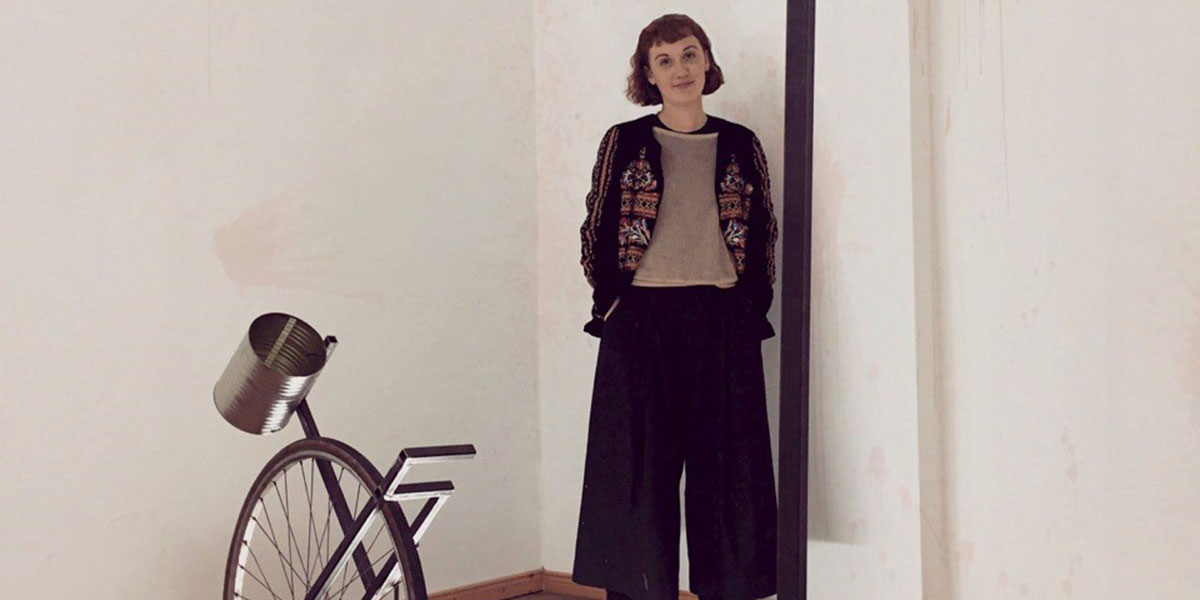Q. How was your time as a student at Christie’s Education?
My years at Christie’s were extremely formative. The undergraduate course provided not only a wide breadth and deep knowledge base of history of art, but also offered genuine and substantial exposure to the multitude of career paths that can be taken in the art world. The highlight of my studies would have to be my inspiring classmates and the array of field trips offered. Each week we would spend time out of the classroom, whether a museum visit, a preview of the Christie’s showroom before an auction, or trips abroad to Paris, Barcelona, or Rome. These artistic adventures offered a real hands on approach and education was not just about how much study you did but about how attentive you were to your surroundings.
Q. What were your ambitions when studying with us, and how closely has your career followed them?
I have always been attracted to characters and people. In the art world this often translates to artists and galleries. During my studies at Christies I was also working part time at a gallery. I was attracted to the buzz of gallery life: creating exhibitions, communicating with artists and even making sales. Naturally I assumed I would go towards the commercial gallery world. However when entering the industry I felt a compelling desire to work more directly with artists and a yearning for an opportunity to be more creative in my daily work. This has since led me to pursue a more curatorial direction. In 2016 together with three others, I set up the project space East of Elsewhere in Berlin, establishing a fertile ground for experimentation: for artists and for us as curators. Through the space I discovered a role that allows me to work closely with artists to produce exhibitions as well as creatively conceptualising the show.
Q. What is Berlin like to live and work in?
Berlin is of course a central hub for artists, with tens of thousands resident and active in the city. So the city exudes creativity and artistic opportunity. Having come from London the pace is much more relaxed. The cost of living and rents are still relatively low meaning there is lots of opportunity for starting projects without too much fear of the worst financial consequences. Berlin has a relaxed energy, which is naturally carried through into the art world; people bring their own beers to openings rather than drinking gallery champagne as just one of many examples. There is a real lust for life and people take care to look after themselves as well as their careers.
Q. Can you tell us about your day to day role?
My works includes freelance artist management and running the project space East of Elsewhere. Currently I split my time between Berlin and Leipzig. Having been told of the great new art spaces and even larger influx of artists to Saxony’s biggest city, I felt it would be interesting to learn more about the Leipzig art scene. When we are exhibiting, there is often a lot of text to write and outreach to be done. But during other times I try to fit in at least one artist studio visit per week, always with eyes open for works that get me excited. Most evenings are taken up with strolling round exhibition spaces, going to open studios, or performances. We are currently focusing on preparing for our first art fair, in Turin, and scouting out the overwhelming possibility of abandoned spaces in Leipzig where we could hold a show.
Q. Who or what do you draw inspiration from?
I always like hearing of the humble beginnings of many of the big hitters of the art world such as Christine Tohmé from Ashkal Alwan who began her project from the back of her car or Klaus Biesenbach hustling for the abandoned East Berlin factory that went on to house the KW Institute.
I have also drawn a lot of inspiration from the intimate working relationships of the Bloomsbury Set, particularly their ‘At Homes’ where the group would share novel ideas or works that were still in development. At East of Elsewhere we try to foster an environment where works in progress are as important to discuss and exhibit as final presentations.
Sign In
Forgotten password?Register
Register now for a free account

